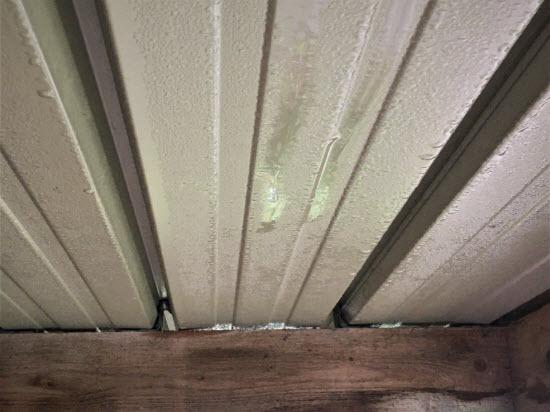Metal roofs have become a popular choice for homeowners due to their durability, longevity, and energy efficiency. However, some metal roof owners may notice a peculiar issue known as “roof sweating.” This phenomenon occurs when condensation forms on the underside of the metal roof’s surface, leading to concerns about water damage and potential issues. In this article, we will delve into the reasons behind why metal roofs sweat, explore the implications of this problem, and provide effective solutions to address and prevent it.

What Causes Metal Roof Sweating?
Metal roof sweating occurs primarily when warm, moist air from the interior of the building comes into contact with the cold surface of the metal roof. This temperature difference causes the moisture in the air to condense into water droplets on the underside of the metal panels. The main factors that contribute to this condensation are poor ventilation and high humidity levels within the building. Additionally, factors like temperature fluctuations, weather conditions, and insulation quality can also play a role in exacerbating the issue.
The Implications of Metal Roof Sweating
While metal roof sweating may seem like a minor inconvenience, it can lead to significant problems if left unaddressed. The accumulated moisture can promote the growth of mold, mildew, and rot in the roof’s structure, compromising its integrity over time. Water damage may also extend to the insulation and other components, affecting the building’s overall energy efficiency and indoor air quality. Furthermore, excessive condensation can result in unsightly water stains on the interior ceiling, leading to potential aesthetic issues.
Solutions to Prevent and Address Roof Sweating
Fortunately, there are several effective solutions to prevent and address metal roof sweating:
- Proper Ventilation: Ensuring adequate ventilation in the attic or roof space is crucial to allow the warm, moist air to escape. Ridge vents, soffit vents, and gable vents are some common ventilation options that can help maintain a balanced airflow and reduce condensation.
- Vapor Barriers: Installing vapor barriers beneath the metal roof can act as a barrier against moisture, preventing it from reaching the roof’s underside. These barriers are especially beneficial in climates with high humidity levels.
- Insulation: High-quality insulation between the interior living space and the roof can help regulate the temperature and minimize the temperature difference between the inside and outside of the metal roof.
- Dehumidifiers: If the building’s interior consistently experiences high humidity levels, using dehumidifiers can effectively reduce excess moisture in the air, decreasing the likelihood of condensation on the metal roof.
- Regular Maintenance: Conducting regular roof inspections and maintenance can help identify and address any potential issues that may contribute to metal roof sweating. Promptly repairing leaks, damaged insulation, or faulty ventilation systems can prevent the problem from worsening.
Seeking Professional Assistance
If metal roof sweating persists despite implementing the above solutions, it may be prudent to seek the expertise of roofing professionals. They can conduct a thorough assessment of the roof and recommend tailored solutions to address the specific causes of condensation. Additionally, they can advise on long-term maintenance practices to ensure the metal roof remains in optimal condition.
Conclusion:
In conclusion, understanding the causes and implications of metal roof sweating is essential for homeowners with metal roofs. Poor ventilation and high humidity levels are the primary culprits behind this issue. However, with proper ventilation, the use of vapor barriers, insulation, dehumidifiers, and regular maintenance, homeowners can effectively prevent and address metal roof sweating. By taking proactive measures and seeking professional assistance when needed, metal roof owners can enjoy a dry, durable, and problem-free roofing system for years to come.



Leave a Reply